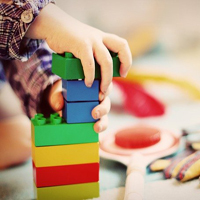Application of a non-pharmacological technique in addition to the pharmacological protocol for the management of children’s preoperative anxiety: A 10 years’ experience

All claims expressed in this article are solely those of the authors and do not necessarily represent those of their affiliated organizations, or those of the publisher, the editors and the reviewers. Any product that may be evaluated in this article or claim that may be made by its manufacturer is not guaranteed or endorsed by the publisher.
Authors
The aim of the study was to investigate how Non- Pharmacological Techniques (NPT), in addition to standard pharmacological techniques, can help to manage and reduce the preoperative anxiety of children waiting for Day Surgery procedures (DS). Isola Serena activity started in 2008 to manage the preoperative time of children waiting for surgery in the playing room. The latter is run by a pedagogist. NPT includes use of games and toys, readings and drawings. A descriptive and comparative study was conducted on 50 children, aged 4 to 12 years, randomly assigned to Isola Serena group ISG and control group CG. All children received standard pharmacological techniques, while those of the ISG also received the NPT. The evaluation of the preoperative anxiety level (modified Yale Preoperative Anxiety Scale) and parent’s coping style (Coping Inventory for Stressful Situation) compared the two groups. The ISG showed a significantly lower level of preoperative anxiety than the CG. Parents’ coping style was not related to the preoperative anxiety. The activity performed in the Isola Serena Project resulted to be effective for the reduction of preoperative anxiety in children undergoing DS procedures.
How to Cite

This work is licensed under a Creative Commons Attribution-NonCommercial 4.0 International License.
PAGEPress has chosen to apply the Creative Commons Attribution NonCommercial 4.0 International License (CC BY-NC 4.0) to all manuscripts to be published.






